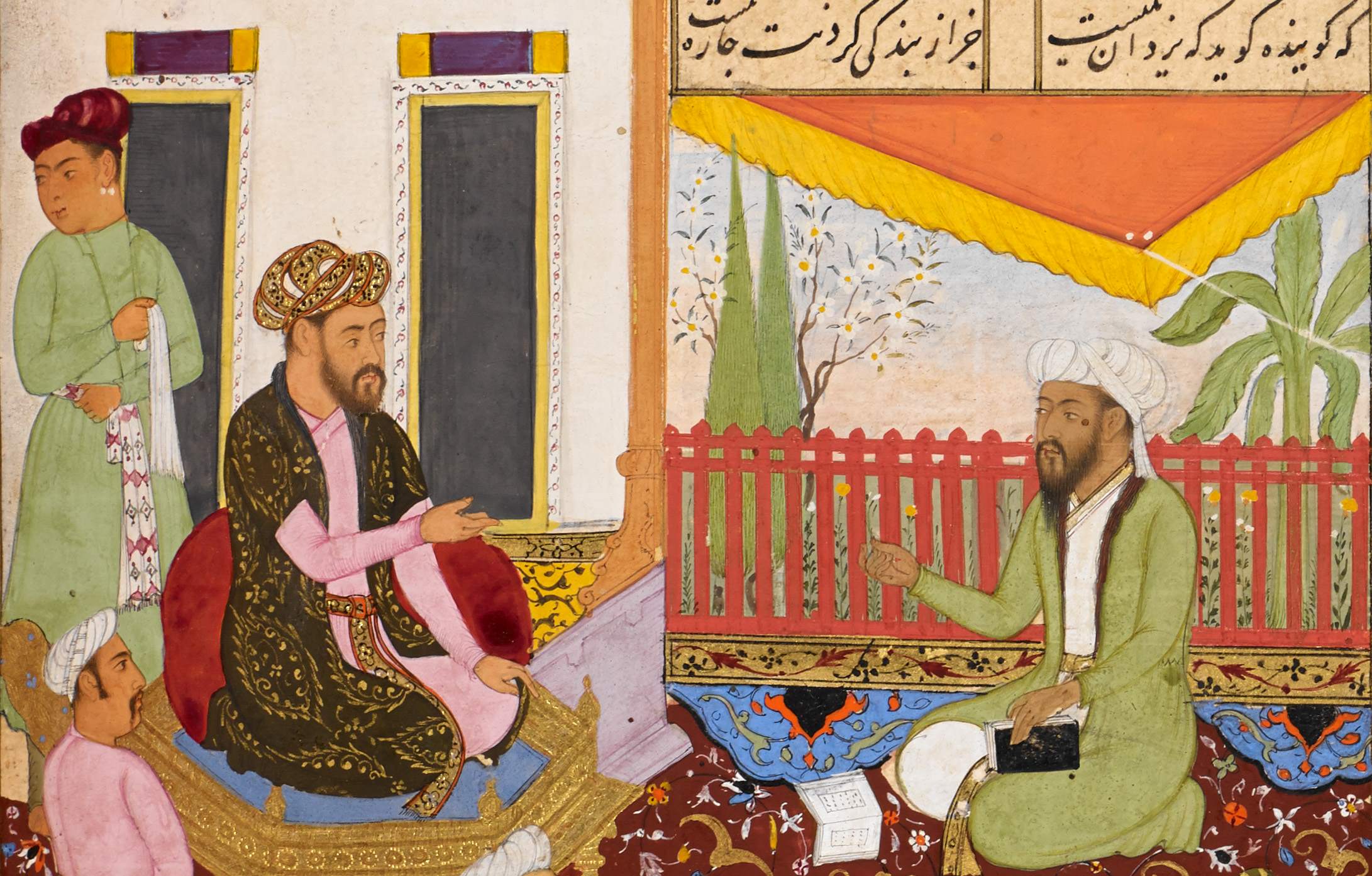
Manichaeism, one of the most intriguing and lesser-known religions of antiquity, offers a fascinating glimpse into the complex tapestry of religious beliefs and practices that have emerged throughout history. Rooted in the teachings of the prophet Mani, this religious movement spread across vast territories, influencing countless individuals and shaping the intellectual landscape of its time. In this article, we will delve into the enigmatic world of Manichaeism and explore seventeen compelling facts about this unique faith. From its origins and foundational beliefs to its cosmology and religious texts, we will embark on a journey to uncover the hidden intricacies of Manichaeism and gain a deeper understanding of its profound impact on religious and philosophical thought. So, let us venture forth and acquaint ourselves with the captivating world of Manichaeism.
Key Takeaways:
- Manichaeism, founded by Mani in the 3rd century, believed in the eternal struggle between light and darkness, influencing various religious and philosophical movements.
- The religion emphasized asceticism, rejected the material world, and sought to liberate the divine spark within individuals, leaving a lasting impact on religious and philosophical thought.
The Origins of Manichaeism
Manichaeism was founded by the prophet Mani in the 3rd century AD. Emerging in Mesopotamia, it quickly spread across the Roman Empire and beyond, gaining a significant following.
The Dualistic Nature of Manichaeism
Manichaeism is based on the belief in the eternal struggle between light and darkness, good and evil. The religion sees the world as a battleground for these cosmic forces.
The Divine Realm in Manichaeism
Manichaeism teaches that there are three realms: the realm of Light, the realm of Darkness, and the realm of the Living Spirit. These realms symbolize the spiritual hierarchy and the eternal struggle between good and evil.
The Role of Mani as the Prophet
Mani was not only the founder but also considered the last prophet of Manichaeism. He claimed to have received divine revelations from various religious figures, including Jesus, Buddha, and Zoroaster.
The Influence of Gnosticism on Manichaeism
Gnosticism has had a significant impact on the development of Manichaeism. The belief in the secret knowledge (gnosis) necessary for salvation and the idea of the spiritual realm influenced Mani’s teachings.
The Spread of Manichaeism
Manichaeism quickly gained followers throughout the Roman Empire, spreading to Egypt, Persia, and Central Asia. It became one of the major religions of the time, even rivaling Christianity in some areas.
The Sacred Texts of Manichaeism
The Manichaean canon consisted of numerous holy scriptures, including the “Gospel of Mani,” “The Treasure of Life,” and “The Living Gospel.” These texts contained the teachings and stories central to Manichaeism.
The Ascetic Lifestyle in Manichaeism
Manichaeism emphasized the importance of leading an ascetic life to purify the soul and avoid entanglement with material possessions. Devout followers practiced abstinence and celibacy.
The Ritual Practices of Manichaeism
Manichaeism incorporated various rituals, such as prayer, fasting, and communal meals. These practices aimed to establish a connection with the divine and promote spiritual growth.
The Manichaean Dualistic Cosmology
The Manichaean cosmology consists of a complex framework, describing the creation of the universe and the role of various celestial beings, including the First Man and the Primal Light.
The Challenge of Orthodox Religions
Throughout its history, Manichaeism faced strong opposition from established religions, particularly Christianity and Zoroastrianism. These religions viewed Manichaeism as a threat to their doctrines and attempted to suppress its influence.
The Decline of Manichaeism
By the 5th century AD, Manichaeism began to decline due to increasing persecution and competition from other religions. Despite its decline in popularity, its influence can still be seen in various religious and philosophical movements.
The Concept of Divine Light and Dark Matter
Manichaeism’s core belief centers around the struggle between divine light and dark matter. Light represents purity and spiritual enlightenment, while dark matter symbolizes ignorance and moral corruption.
The Rejection of the Material World
Manichaeism teaches that the material world is inherently flawed and evil. True salvation lies in transcending the physical realm and reconnecting with the divine light within.
The Manichaean Pantheon
Manichaeism acknowledges a pantheon of divine beings, including various deities representing different aspects of the cosmic struggle between light and darkness. These deities played a crucial role in Manichaean cosmology.
The Search for the Divine Spark
Manichaeism teaches that every individual possesses a divine spark of light trapped within their physical bodies. The goal is to liberate this divine essence through spiritual practices and knowledge.
The Legacy of Manichaeism
Although Manichaeism declined as an organized religion, its influence can still be seen in various philosophical and religious movements, such as certain elements of Gnosticism and the Cathars of medieval Europe.
In conclusion, Manichaeism emerged in the 3rd century AD as a dualistic religion, centered around the eternal struggle between light and darkness. With its complex cosmology, emphasis on asceticism, and the teachings of its prophet Mani, Manichaeism gained a significant following before eventually declining in popularity. Nevertheless, its impact on religious and philosophical thought has continued to reverberate through the centuries.
Conclusion
In conclusion, Manichaeism is a fascinating and complex religious movement with a rich history and unique set of beliefs. It emerged during a time of religious and philosophical diversity, offering a dualistic worldview that sought to explain the existence of good and evil in the world. This religion influenced many cultures and had a significant impact on the development of various religious and philosophical traditions. Despite its decline and near-extinction, Manichaeism continues to capture the interest and curiosity of scholars and enthusiasts alike. Its teachings on the nature of good and evil, the human soul, and the ultimate quest for salvation provide valuable insights into the complexities of the human experience and our ongoing search for meaning and purpose.
FAQs
Q: What is Manichaeism?
A: Manichaeism is a religious movement founded in the 3rd century CE by the prophet Mani. It blends elements of Zoroastrianism, Christianity, and Gnosticism, and offers a dualistic worldview that explains the existence and eternal struggle between good and evil.
Q: Where did Manichaeism originate?
A: Manichaeism originated in the Persian Empire, primarily in present-day Iran and Iraq. It quickly spread to different regions, including Central Asia, China, and the Roman Empire.
Q: What are the central beliefs of Manichaeism?
A: The central beliefs of Manichaeism include the existence of two opposing forces – a force of light (good) and a force of darkness (evil). The human soul is seen as a divine spark trapped in the material world, and salvation is achieved through knowledge and the purification of the soul.
Q: How did Manichaeism influence other religions?
A: Manichaeism had a significant impact on various religious and philosophical traditions, including Christianity, Islam, and Buddhism. Its dualistic cosmology and emphasis on the struggle between good and evil influenced the development of these religions in different ways.
Q: Is Manichaeism still practiced today?
A: Manichaeism experienced a decline and near-extinction in the medieval period. While there are no organized communities of Manichaeans today, the religion continues to spark academic interest and curiosity as scholars seek to uncover its teachings and influence on world religions.
Was this page helpful?
Our commitment to delivering trustworthy and engaging content is at the heart of what we do. Each fact on our site is contributed by real users like you, bringing a wealth of diverse insights and information. To ensure the highest standards of accuracy and reliability, our dedicated editors meticulously review each submission. This process guarantees that the facts we share are not only fascinating but also credible. Trust in our commitment to quality and authenticity as you explore and learn with us.


